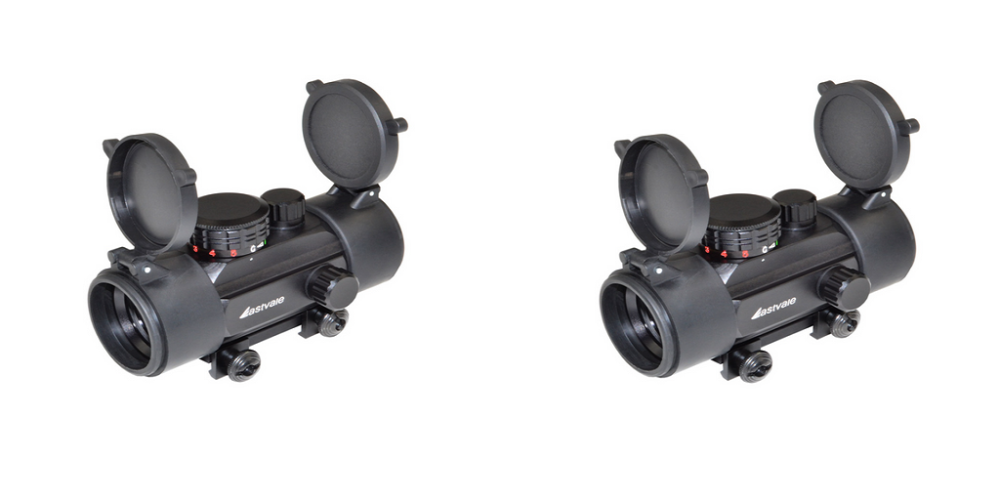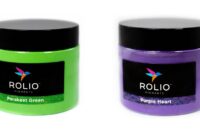The gun optics you pair with your rifle can either enhance your abilities behind the stock or complicate your ability to acquire a target.
Two of the most common classes of optics on the market are red dot sights and magnified optics, often referred to as scopes.
Let’s take a look at the relative advantages of each.
Red Dot Sights
A red dot sight is a type of sight that consists of a tube or a glass panel optic on which a small dot of light (often red or green) is projected.
These types of gun optics are great in low light, allow for single-point aiming, and even more importantly, allow you to keep your eyes open when you’re aiming for better situational awareness and more rapid target acquisition. You simply “point and shoot.”
Another great thing about red dot sights is that they are free of parallax distortions, which means that if the sight is calibrated correctly and sighted in, where the point projects (regardless of how you mount the rifle or look through the sight) should correspond to the point of impact.
Scopes (Magnified Optics)
By contrast with red dot sights, scopes and other magnified optics are ideal for connecting with targets are greater ranges.
Magnified gun optics like rifle scopes consist of a tube containing glass optics that magnify the image of a target. Over the magnified image crosshairs (a reticle) are overlaid.
Some scopes are effective in low-light situations, and because scopes enable shooters to “zoom in” on far off-targets, they can be used to deliver tighter groups at greater ranges.
This gives scopes the advantage for shooting at extended distances, although scopes can also be used to engage targets that are not as far off. However, it should be noted that a scope will only produce a sight picture for one eye, and will extend the time it takes to acquire a target.
Which Should You Choose?
You can pair either a red dot or a scope with your rifle, but here’s the basic takeaway.
Both can be used to deliver relatively rapid shots, efficiently and accurately. However, red dot sights are more effective at close ranges, when you might need to engage multiple targets quickly, such as during a competition.
A magnified optic like a scope takes the upper hand when precision and accuracy at greater distances are more desirable than an open sight picture. Though a scope will slightly hinder target acquisition, it does enable greater accuracy farther out, which can be a bonus for long-distance competition or hunting.
Basically: choose a red dot if you’re primarily dealing with targets at closer ranges and opt for a scope if you’re more concerned with precision or long-distance shooting. Both can be serviceable options as gun optics.
Back It Up (Literally) with Back-Up Iron Sights
One thing you should keep in mind when choosing a gun optic to pair with your rifle: you don’t need to abandon traditional iron sights or even laser sights. The latter can still be tacked onto your handguard and the former can be offset so as to lie out of the way of your primary optic.
Whatever optic you choose, add a pair of flip-up offset iron sights to your rifle so you can call on them as a redundant measure of preparedness – for example, if your red dot sight even unexpectedly ran out of power.
Visit MCS Gearup
MCS Gearup, at MCSGearup.com, offers a wide range of gun optics, laser sights, and backup iron sights, as well as weapon lights and other firearms accessories. They even offer unique optics, like an Assault Optic (1-4×28) scope that contains a top section of rail over the tube as well as a Micro Red Dot which can be mounted to it, giving you the advantages of both options.
To learn more about these optics and other niche shooting accessories, such as those designed to support scotopic (night) vision, visit MCSGearup.com or contact them at 239-848-6757.












